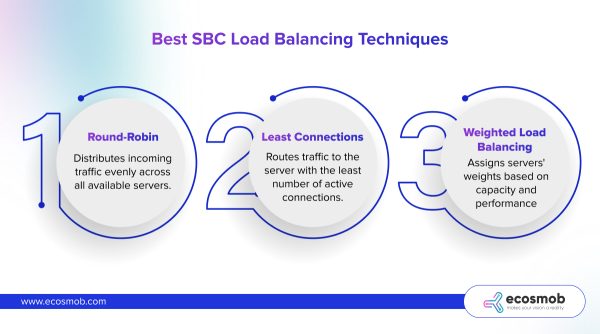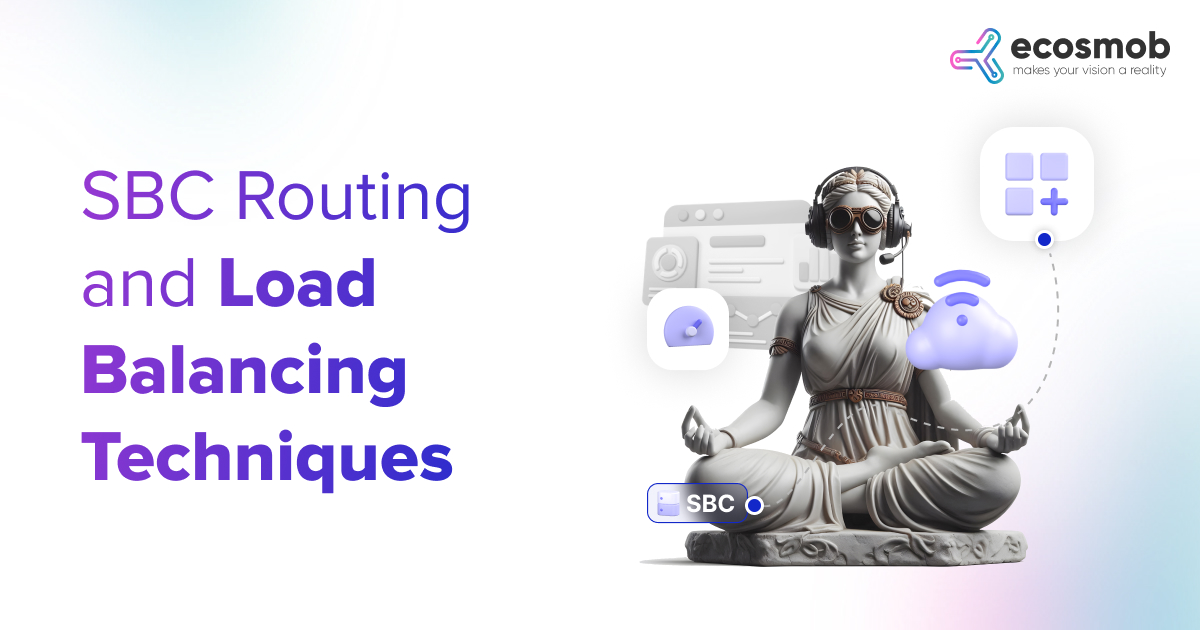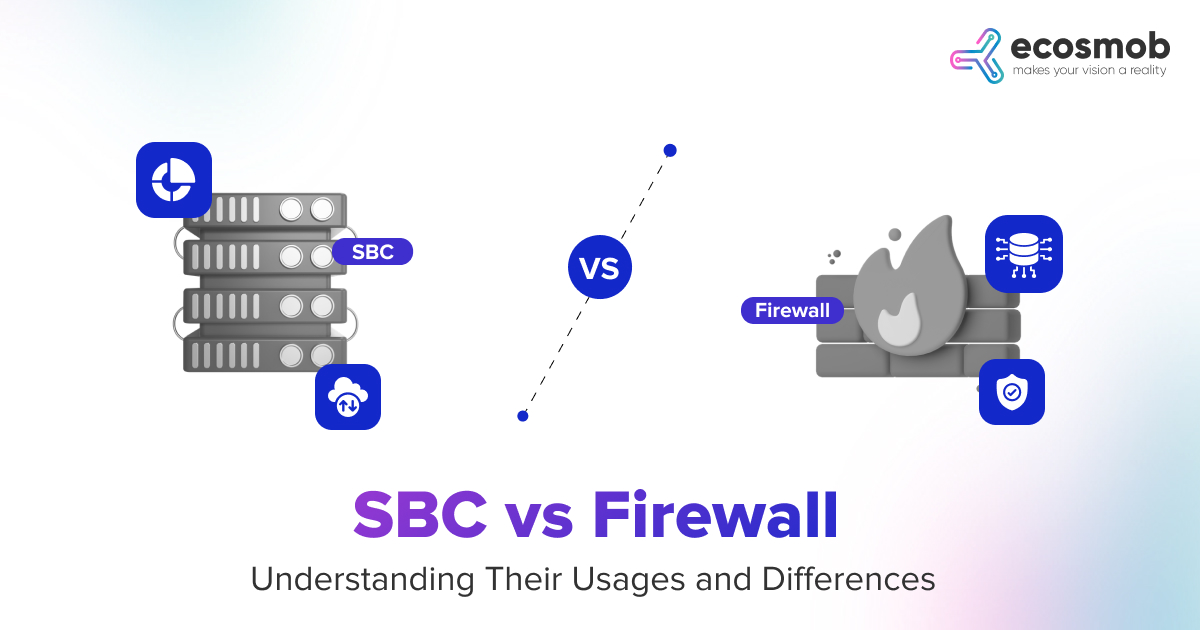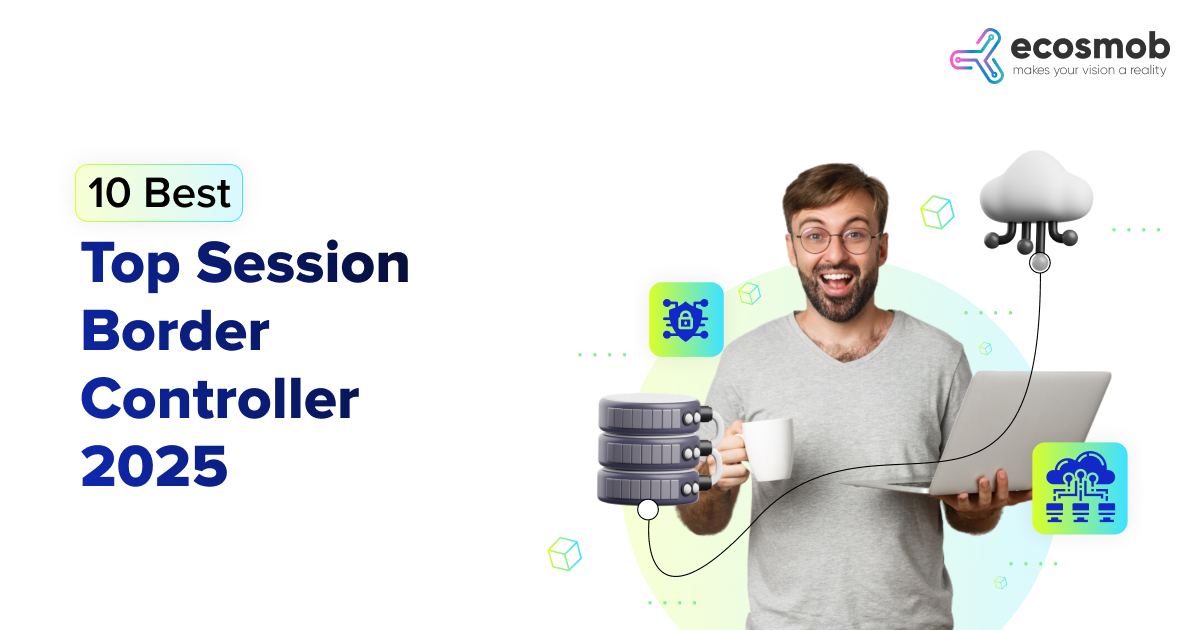QUICK SUMMARY
Unlock the full potential of your VoIP system with advanced SBC routing and load-balancing techniques. Continue reading to learn how it’s done!
Imagine a VoIP system where routing decisions are made with laser-like precision, and failovers happen so seamlessly that you wouldn’t even notice a hiccup. This is the power of an SBC equipped with intelligent routing and load balancing.
For the uninitiated, Session Border Controllers (SBCs) act as the gatekeepers of your environment, meticulously managing the flow of voice, video, and data between your internal network and the Public Switched Telephone Network (PSTN) or SIP trunking providers.
But beneath the SBC’s seemingly simple duties lies a treasure trove of functionalities waiting to be explored.
Let’s dive into SBC routing and load balancing techniques, showcasing how they ensure high performance and availability.
Customize your traffic flow and enhance security with Ecosmob's advanced SBC solutions.
SBC Direct Routing
SBC Direct Routing involves connecting an SBC directly to a VoIP provider or the Public Switched Telephone Network (PSTN). This direct connection allows for better control over call routing, resulting in improved call quality and reliability. Direct routing ensures that calls are efficiently managed, reducing latency and minimizing packet loss, which is critical for maintaining high-quality VoIP communication.
Benefits of SBC Direct Routing
- Improved Call Quality: Direct routing reduces the number of hops a call must take, minimizing latency and packet loss.
- Enhanced Reliability: Direct connections provide more stable and predictable routes for VoIP traffic.
- Better Control: Direct routing allows businesses to implement specific policies for handling calls, ensuring optimal performance.
SBC Direct Routing Implementation
- Network Configuration: Establish direct SIP trunks between the SBC and VoIP providers.
- QoS Settings: Configure QoS policies to prioritize VoIP traffic over other data types.
- Monitoring: Regularly monitor the performance of the direct routes to detect and address any issues promptly.
What is Policy-Based Routing?
Let’s understand Policy-Based Routing based on the improvements brought by SBC direct routing.
This technique allows SBCs to route VoIP traffic based on predefined policies. These policies can be set to give priority to specific types of traffic, like video or voice calls, over others. Policy-based routing enables you to customize your traffic flow per your business requirements, ensuring critical communications receive the bandwidth and low-latency paths.
Benefits of Policy-Based Routing
- Customizable Traffic Management: Allows specific traffic types to be prioritized, improving overall network performance.
- Enhanced Security: Policies can be set to route sensitive data through more secure paths.
- Increased Flexibility: Easily adapt to changing network conditions and business requirements.
How Does Policy-Based Routing Work?
- Defining Policies: Create routing policies based on criteria such as source/destination IP addresses, port numbers, or protocol types.
- Implementing Policies: Apply these policies to the SBC to influence the routing decisions for specific traffic flows.
- Monitoring and Adjustment: Regularly check the effectiveness of the policies and adjust them as needed to maintain optimal performance.
Also read: 6 Reasons Your VoIP Phone System Needs An SBC.
VoIP Traffic Management Techniques
Effective VoIP traffic management is essential to achieving seamless VoIP communication.
This involves ensuring traffic is routed efficiently and managing how it flows through the network. The enhancements brought by SBC direct routing and policy-based routing lay the groundwork for comprehensive traffic management, ensuring high-quality, uninterrupted communication.
SBCs use several techniques to manage VoIP traffic:
1. Traffic Prioritization
Ensures that voice traffic is prioritized over less critical data. This is crucial because voice traffic is sensitive to delays and requires low latency.
Implementation:
- Class of Service (CoS): Assign different priority levels to different types of traffic.
- Differentiated Services (DiffServ): Mark packets with different priority levels to prioritize voice traffic.
2. Bandwidth Management
Allocates sufficient bandwidth for VoIP calls, preventing congestion.
Implementation:
- Traffic Shaping: Regulate traffic flow to ensure VoIP calls have enough bandwidth.
- Bandwidth Reservation: Reserve a portion of the available bandwidth for VoIP traffic.
3. Jitter Buffering
Reduces the impact of network jitter, maintaining smooth audio quality. Jitter occurs when packets arrive at irregular intervals, which can cause choppy audio.
Implementation:
- Static Jitter Buffers: Pre-configured to a fixed size to absorb variations in packet arrival times.
- Adaptive Jitter Buffers: Dynamically adjust size based on network conditions to optimize performance.
4. Traffic Shaping
Controls the flow of traffic to prevent network overloads. This involves regulating the rate at which packets are sent into the network.
Implementation:
- Rate Limiting: Limit the maximum rate at which data can be sent.
- Token Bucket Algorithm: Control the burstiness of traffic to prevent congestion.
Don't let network congestion slow you down. Let us help you implement these techniques!
Load Balancing in SBCs
Having established a robust system for managing VoIP traffic, the next critical step is ensuring network resources are utilized efficiently.
This is where load balancing becomes essential. In SBCs, load balancing distributes VoIP traffic across multiple servers, ensuring no single server becomes overwhelmed and ensuring optimal network performance. Effective load balancing is vital for maintaining a stable and responsive VoIP infrastructure, especially during peak usage times.
Here are some load-balancing techniques you can use:
1. Round-Robin
Distributes incoming traffic evenly across all available servers. This is a simple but effective method for ensuring that no single server is overwhelmed.
Implementation:
- Load Balancer Configuration: Configure the SBC to use the round-robin algorithm for distributing traffic.
- Monitoring: Continuously monitor server loads to ensure even distribution.
2. Least Connections
Routes traffic to the server with the least number of active connections. This helps balance the load more effectively, mainly when traffic is distributed unevenly.
Implementation:
- Real-Time Monitoring: Continuously monitor the number of active connections on each server.
- Dynamic Routing: Adjust routing decisions based on the current load on each server.
3. Weighted Load Balancing
Assigns servers’ weights based on capacity and performance, directing more traffic to more capable servers. This method ensures that more powerful servers handle more traffic.
Implementation:
- Capacity Assessment: Evaluate the capacity and performance of each server.
- Weight Assignment: Assign weights to each server based on their capacity.
- Traffic Distribution: Adjust traffic distribution based on the assigned weights.
Benefits of Load Balancing
- Improved Performance: Ensures no single server is overwhelmed, maintaining high performance.
- Increased Reliability: Reduces the risk of server failures impacting overall service.
- Scalability: Easily add more servers to accommodate increased traffic loads.

- Round-Robin: Distributes incoming traffic evenly across all available servers.
- Least Connections: Routes traffic to the server with the least number of active connections.
- Weighted Load Balancing: Assigns servers’ weights based on capacity and performance
High Availability (HA) Configuration and SBC Failover
To complement the load balancing techniques, High Availability (HA) Configuration and SBC Failover are essential for ensuring continuous service. HA configurations typically involve deploying redundant SBCs that can take over in case of failure.
SBC recovery mechanisms ensure that if one SBC goes down, another can seamlessly take over, maintaining uninterrupted VoIP communication.
Here are some essential HA configuration and SBC failover techniques:
1. Active-Passive Configuration
One SBC is active, while another is on standby, ready to take over if the active SBC fails.
Implementation:
- Redundant Hardware: Deploy redundant SBCs in different locations to prevent a single point of failure.
- Failover Mechanisms: Configure failover mechanisms to detect failures and automatically switch to the standby SBC.
2. Active-Active Configuration
Both SBCs are active and share the load, providing instant SBC failover capability.
Implementation:
- Load Sharing: Distribute traffic evenly between the active SBCs.
- Synchronization: Ensure that both SBCs are synchronized to maintain session continuity during failover.
3. Heartbeat Monitoring
Regularly checks the status of SBCs, triggering SBC failover if an issue is detected.
Implementation:
- Health Checks: Continuously monitor the health of each SBC.
- Automatic Failover: Configure automatic failover mechanisms to switch to a healthy SBC in case of a failure.
Benefits of HA Configuration and Failover
- Uninterrupted Service: Ensure continuous VoIP communication even during hardware or software failures.
- Increased Reliability: Redundant configurations increase the overall reliability of the VoIP infrastructure.
- Scalability: Easily scale the HA configuration to accommodate growing traffic loads.
SBC Deployment Best Practices
Deploying SBCs requires careful planning and execution to ensure they effectively manage VoIP traffic. Here are some best practices for SBC deployment:
1. Network Assessment
Evaluate your network to identify potential bottlenecks and ensure sufficient bandwidth.
Implementation:
- Traffic Analysis: Analyze current traffic patterns to identify potential bottlenecks.
- Redundancy Planning: Ensure redundancy in your network paths and equipment to avoid single points of failure.
2. Security Considerations
Implement strong security measures to safeguard against threats like DoS attacks and fraud.
Implementation:
- Encryption: Encrypt VoIP traffic to protect against eavesdropping.
- Access Controls: Implement access controls to restrict unauthorized access to the SBC.
3. Scalability Planning
Plan for future growth by ensuring your SBC deployment can easily scale with increasing traffic loads. A report by Research Nester forecasts a Compound Annual Growth Rate (CAGR) of 6.2% for the SBC market from 2023 to 2035, highlighting the growing importance of scalability in SBC deployments.
Implementation:
- Modular Architecture: Use a modular architecture that allows for easy expansion.
- Capacity Planning: Continuously monitor traffic loads and plan for future capacity needs.
4. Regular Monitoring
Continuously monitor SBC performance to identify and address issues promptly.
Implementation:
- Performance Monitoring: Use performance monitoring tools to track key metrics such as latency, jitter, and packet loss.
- Alerting: Configure alerts to notify administrators of any performance issues.
Wrapping Up
Session Border Controllers are indispensable for managing VoIP traffic and ensuring secure, reliable, and high-quality communication.
By utilizing advanced routing and load balancing techniques, SBCs optimize resource utilization and maintain service continuity despite network challenges. Adopting best practices for SBC deployment and configuration can substantially boost the reliability and performance of your VoIP infrastructure.
Ready to optimize your VoIP infrastructure?
Contact us today to learn how we tick all these boxes in your custom SBC solution!
FAQs
Can SBCs handle traffic from multiple VoIP providers?
Yes, SBCs can manage traffic from multiple VoIP providers, ensuring seamless interoperability and optimized routing.
What is the difference between static and adaptive jitter buffers?
Static jitter buffers are pre-configured to a fixed size, while adaptive jitter buffers dynamically adjust their size based on current network conditions.
What are some common policies used in Policy-Based Routing?
Common policies include prioritizing voice traffic over data, routing sensitive data through secure paths, and adapting to changing network conditions.
What types of traffic can an SBC prioritize?
An SBC can prioritize various types of traffic, including voice, video, and data, based on predefined policies and network conditions.
Can an SBC support multiple VoIP protocols?
Yes, SBCs are designed to support multiple VoIP protocols, ensuring compatibility and seamless communication between different systems.







![SIP Protocol [SIP Signalling]](https://a4f8b050.delivery.rocketcdn.me/wp-content/uploads/2024/12/Blog-79.jpg)







